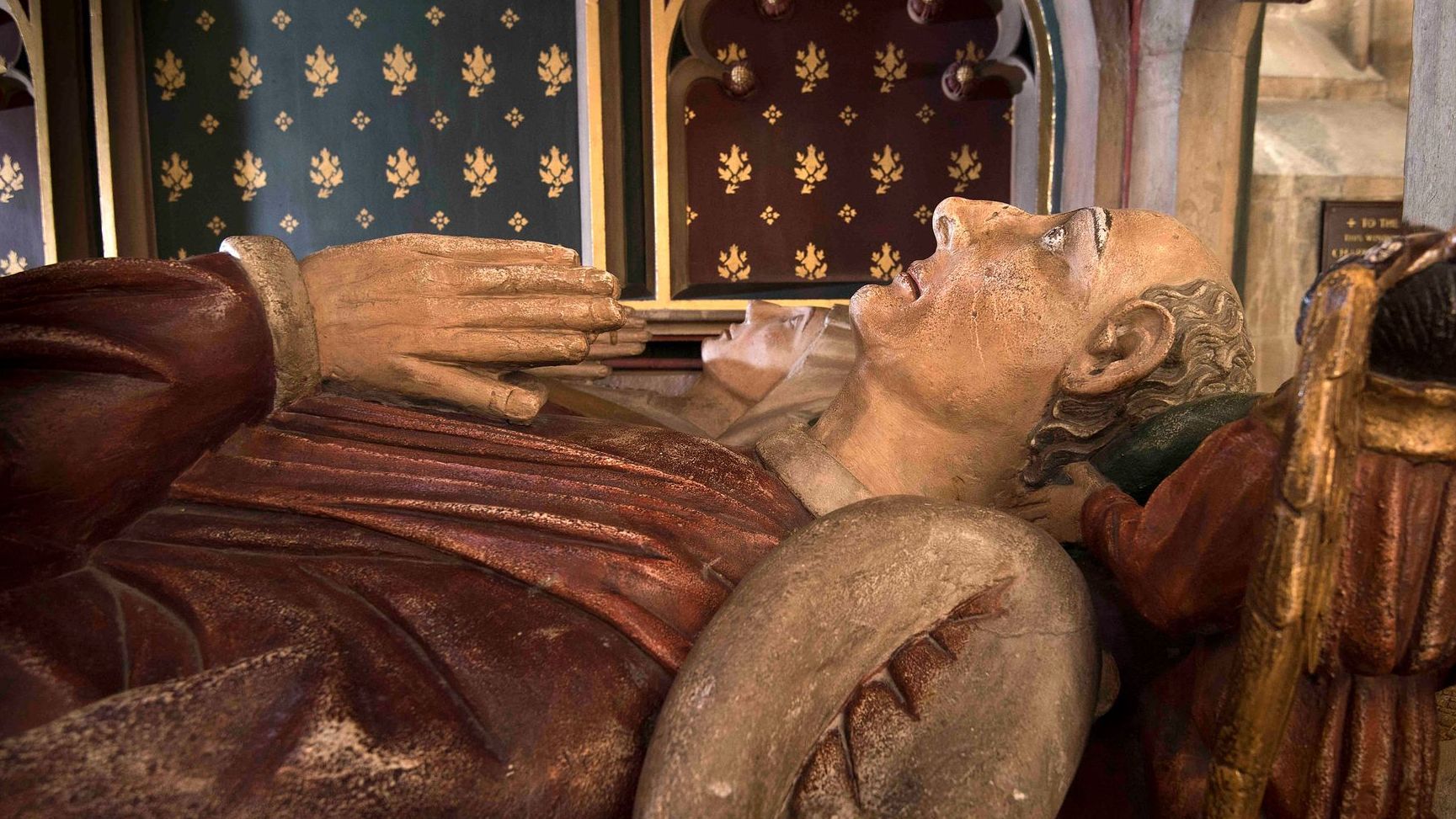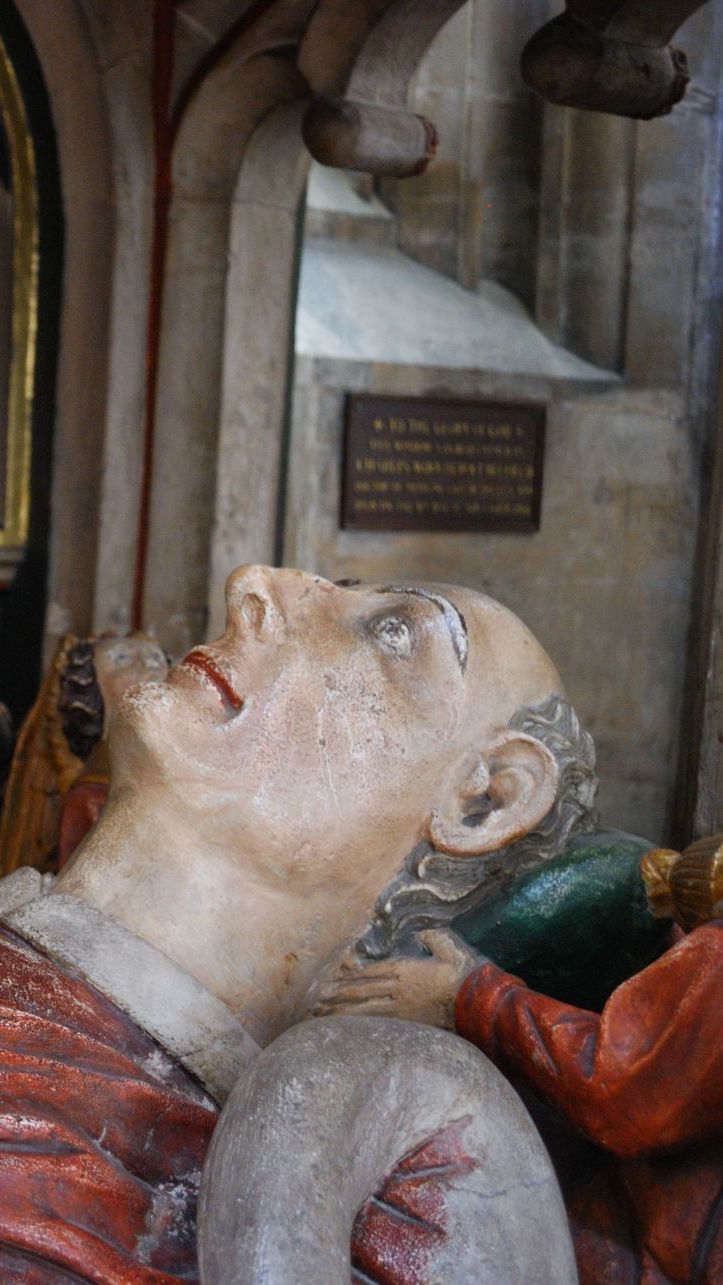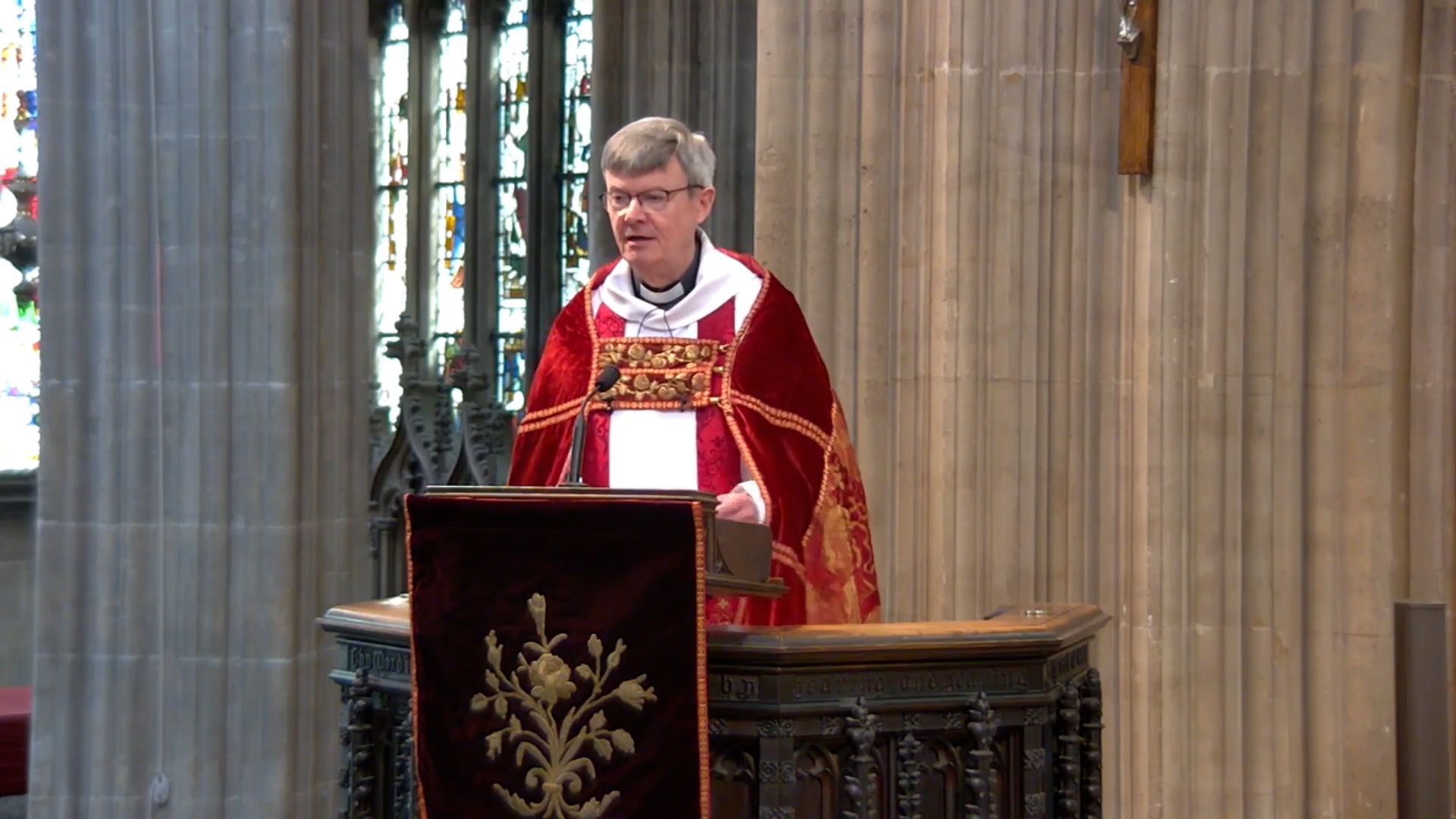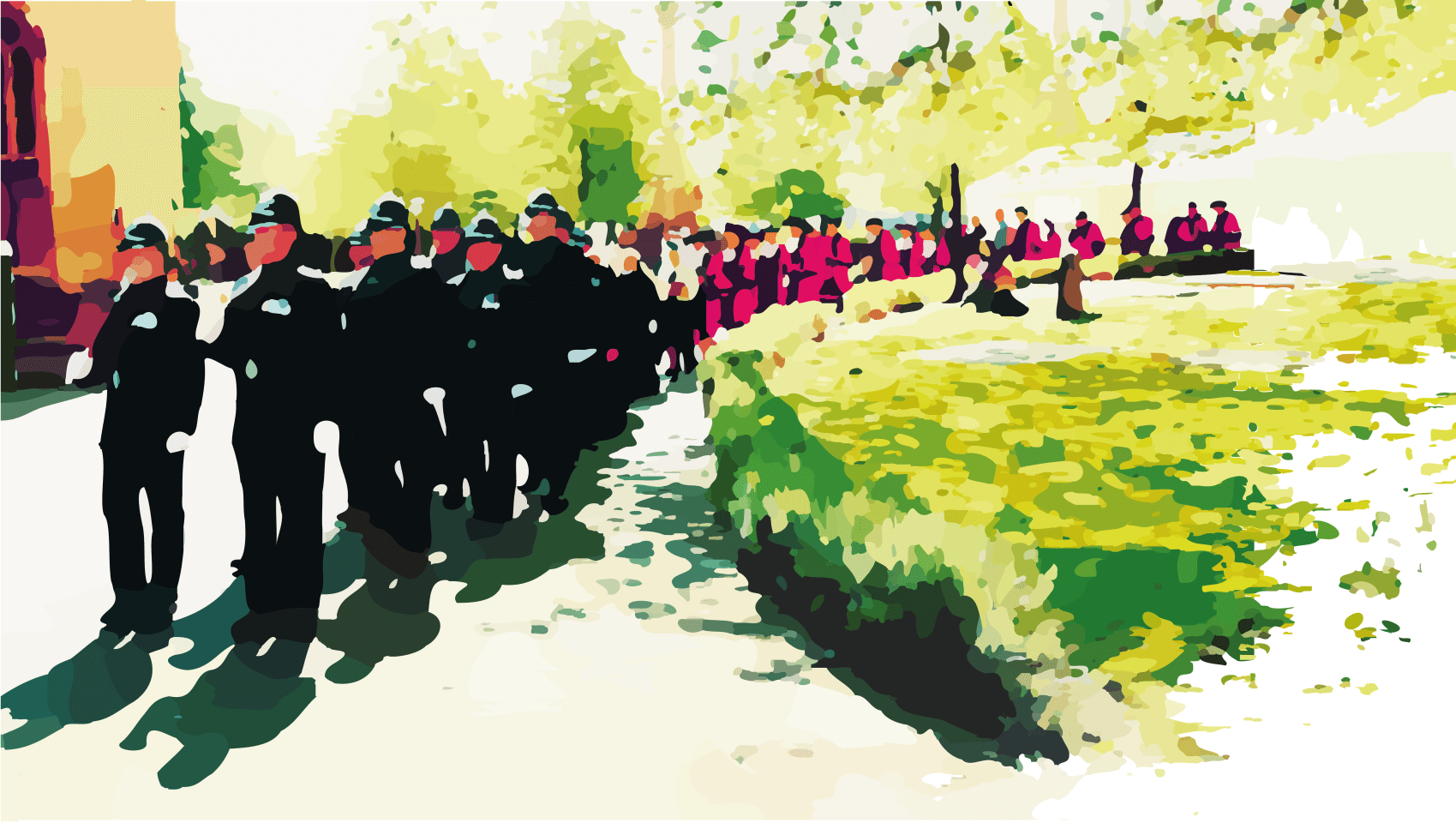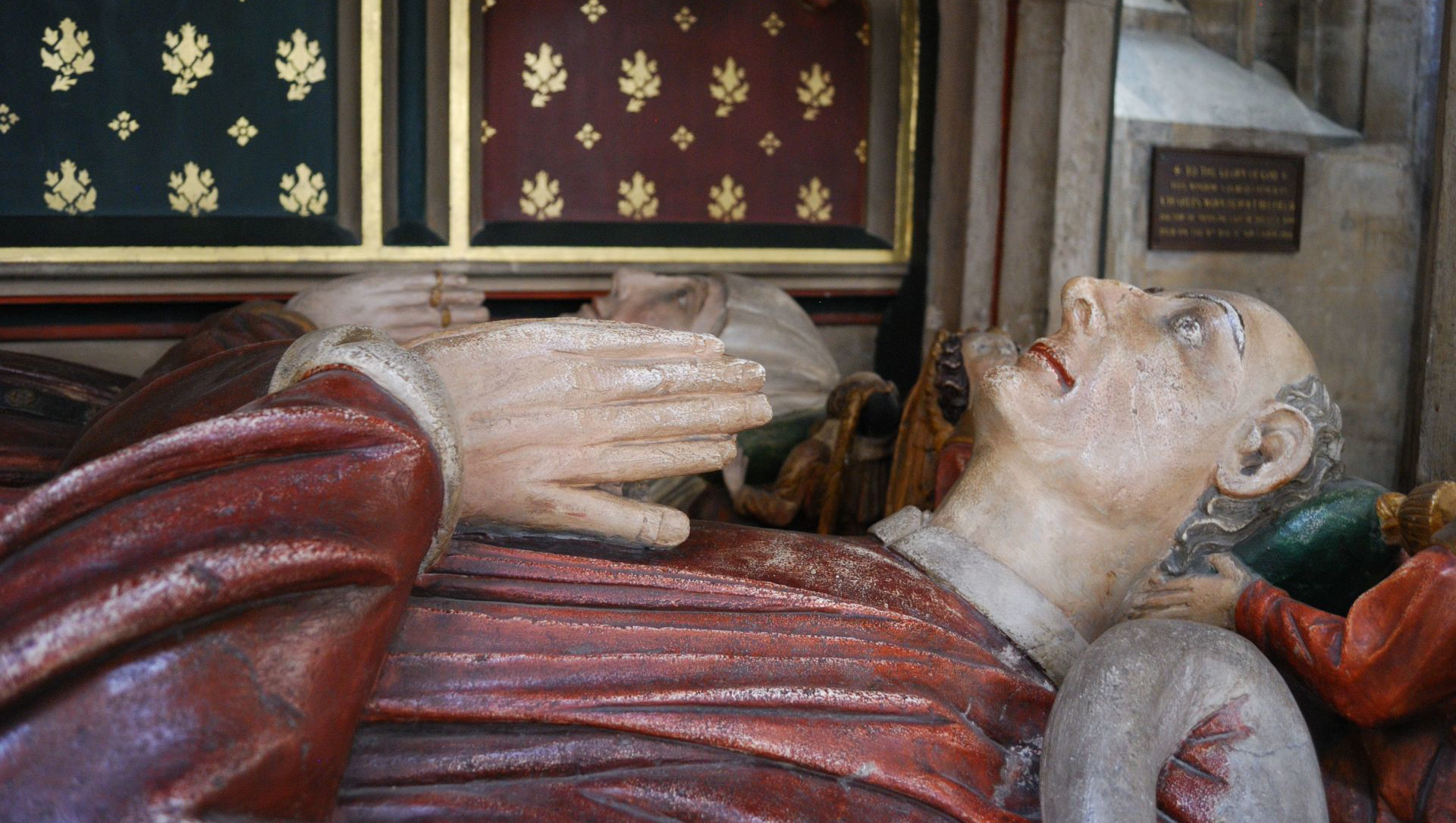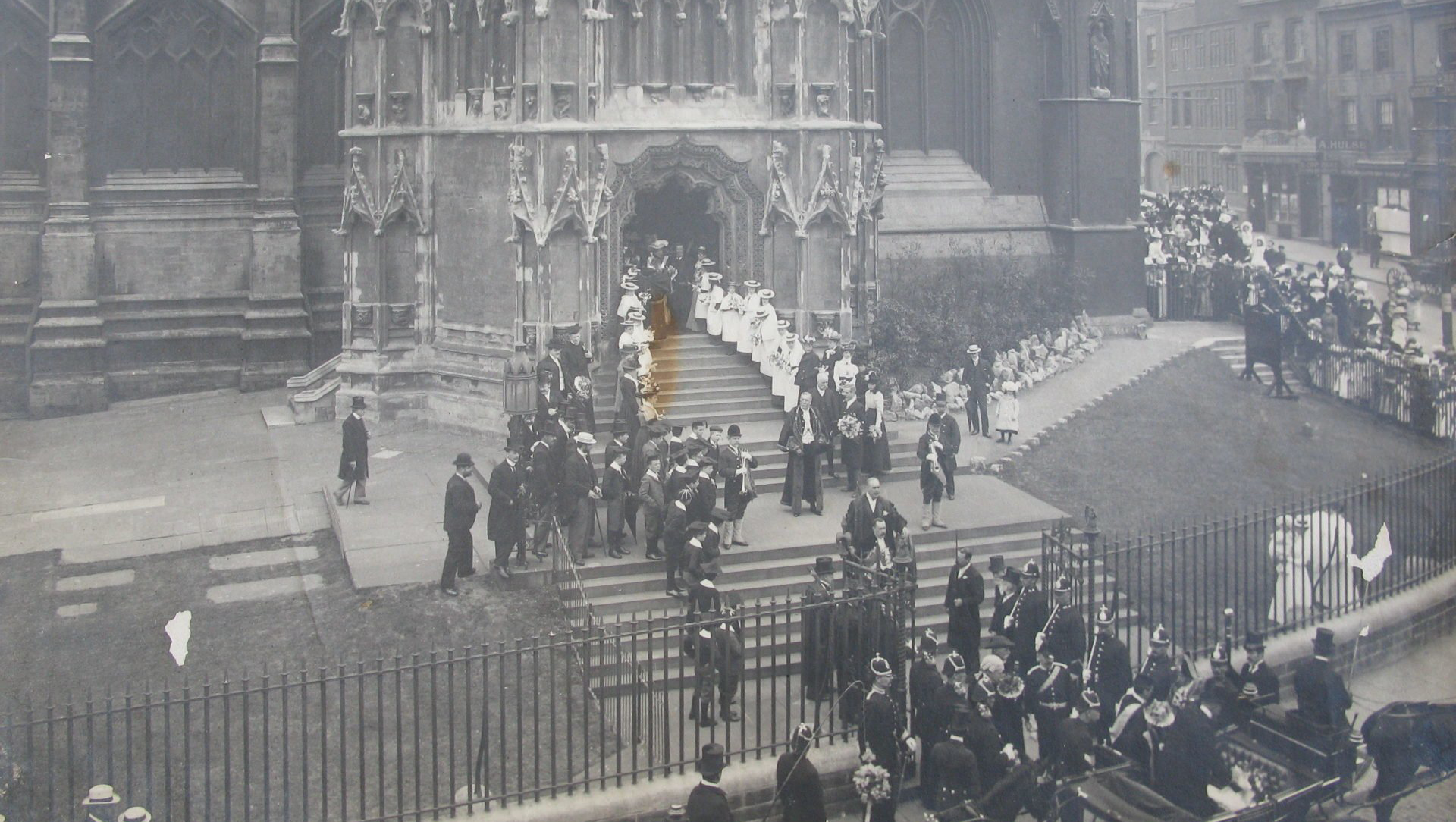The South Transept
Merchants and Carvings
This area is associated with William II Canynges (1399–1474), five times mayor of Bristol and MP twice. Canynges was a wealthy merchant and a great benefactor to the church. His canopied tomb and marble effigy can be seen near the south window, which contains portraits of famous merchants and explorers including Canynges. During the medieval era the roof space above the south transept housed a columbarium, or dovecote.
William II Canynges
William Canynges the younger (1399 - 1474) was one of the most successful Redcliffe merchants in the medieval period, possibly the richest man in the land at the time. He was the grandson of the first William Canynges (also a benefactor to this church). By 1461 he had the largest merchant fleet in England, nine ships totalling 2,853 tons and crewed by 800 sailors (according to William of Worcestre).
The commemorative board above Canynges' marble effigy lists the names of Canynges' ships, followed by a poetic epitaph:
These are the names of his shiping and their burthens : -The Mary Canynges , 400 tons ; The Mary and John , 900 ; The Kathrine , 140 ; The Little Nicholas , 140 ; The Katharine of Bos- ton , 220 ; The Mary Redcliff , 500 ; The Galliot , 050 ; The Mary Batt , 220 ; The Margaret , 200 ; A ship in Ireland , 100
No age , no time , can wear out well woon fame,
The stones themselves a statly work doth shew,
From senceless grave we ground may mens good name,
And noble minds by ventrous deeds we know.
A lanterne cleer setts forth a candele light,
A worthy act declares a worthy wight;
The buildings rare , that here you may behold,
To shrine his bones deserves a tombe of gold.
The famous fabricke which he here hath donne,
Shines in its sphere as glorious as the sonne;
What needs more words , the future world he sought,
And set the pomp and pride of this at nought.
Heaven was his aim , let heaven be still his station,
That leaves such work for others imitation.
Canynges' extraordinary career led him to become an MP, five times Mayor of Bristol and, after the death of his wife, Joan, in 1467 to take holy orders as a priest. He was ordained on priest on 16th April 1468 by his friend, Bishop Carpenter of Worceste, and said his first mass in St Mary Redcliffe on 17th May that year - Whitsunday. At one time that event was commemorated here by an annual service.
Canynges the younger was one of several generous merchant benefactors whose gifts enabled much of the present glorious church building to be created. To this day, one of the main charities that supports the care and embellishment of the church bears his name (The Canynges Society) and the building has many merchant marks (medieval corporate logos), identifying other benefactors.
There is a stained glass image of him in the large window in the middle of the south transept's south wall. That window is appropriately located directly above the brightly coloured canopied tomb of Canynges and his beloved wife. To the left of the tomb, there is also an alabaster effigy of Canynges. This shows him dressed in priestly robes as Dean of Westbury.
Recumbent effigy
To the right of Canynges' tomb is a recumbent effigy of a man with a purse and a dog, dating from the late 15th century. It is said to be Canynges' almoner (an official distributor of food or money to the poor).
William Coke's tomb slab
In the floor, to the right of the South Transept, is a late 15th century incised slab with motifs representing a colander and a knife. This is a memorial to William Coke, William Canynges' cook.
Stained glass
The window to the east in the south wall of the south transept (date 1905) is a memorial to an unnamed soldier, and is known as the "wayfarer's window". It shows St Michael, the first English martyr St Alban, and the English patron saint, St George.
The middle window in the south wall of the south transept was designed by the great artist Sir Ninian Comper in 1914 but in the style of a 15th century window. The upper level shows the great merchant John Cabot and his sons, Sebastian, Lewis and Sancto, as well as his little ship the Matthew, which sailed from Bristol in 1497 to discover Newfoundland. The lower levels tell the story of the Canynges family and its links to the church.
There is also an image of stone mason Norton who Canynges the younger engaged to lead the work of creating the magnificent 15th century building we now have and William Canynges the younger himself, cradling a model of St Mary Redcliffe in his arms (minus its much later current Victorian spire).
Carved stone figures
Displayed on the stone benching around the South Transept, is an important collection of medieval stone carvings. Most of these are original corbels from the exterior of the North Porch that were replaced with copies during the Victorian restoration of the church. A corbel is a structural piece of stone that juts from a wall to support the weight of an element above. These corbels supported the weight of statues representing kings and bishops that once adorned the outside of the porch. They are shown in various states of agony or infirmity, leading some to theorise that they may have represented the ordinary people who would have visited the shrine of the Virgin Mary that once existed in the North Porch to be healed.
